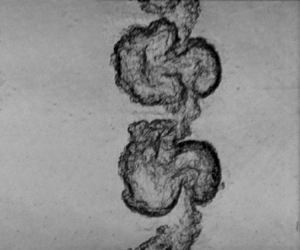No CrossRef data available.
Article contents
On Richtmyer–Meshkov finger collisions in a light fluid layer under reshock conditions
Published online by Cambridge University Press: 02 December 2024
Abstract

The fingers known as bubbles (spikes) resulting from the penetration of light (heavy) fluids into heavy (light) fluids are significant large-scale features of Richtmyer–Meshkov instability (RMI). Through shock-tube experiments, we study finger collisions in light fluid layers under reshock conditions. Four unperturbed fluid layers with varying thicknesses are created to analyse the motion of waves and interfaces during finger collisions. The wave dynamics, sensitive to initial layer thicknesses, are characterized by a one-dimensional theory. Eight perturbed fluid layers, with four thicknesses and two interface phase combinations, are generated to explore the finger collision mechanism. It is shown that after reshock, the initial in-phase and anti-phase cases undergo spike–bubble rear-end collisions (SBCs) and spike–spike head-on collisions (SSCs), respectively. Compared with SBCs, SSCs significantly suppress spike growth, leading to the attenuation of perturbation growth, especially for larger thicknesses. As the initial thickness decreases, an SSC impedes the downstream interface from reversing its phase, resulting in abnormal RMI, thereby reducing the SSC's effectiveness in attenuating growth. The effects of rarefaction waves enhance both interfaces’ amplitudes and the whole layer's thickness, diminishing the intensity of finger collisions, while the second reshock exerts an opposing influence. Linear and nonlinear models, incorporating the influence of reshocks and rarefaction waves, are developed to predict the interface perturbation growth before and after finger collisions.
JFM classification
- Type
- JFM Papers
- Information
- Copyright
- © The Author(s), 2024. Published by Cambridge University Press



